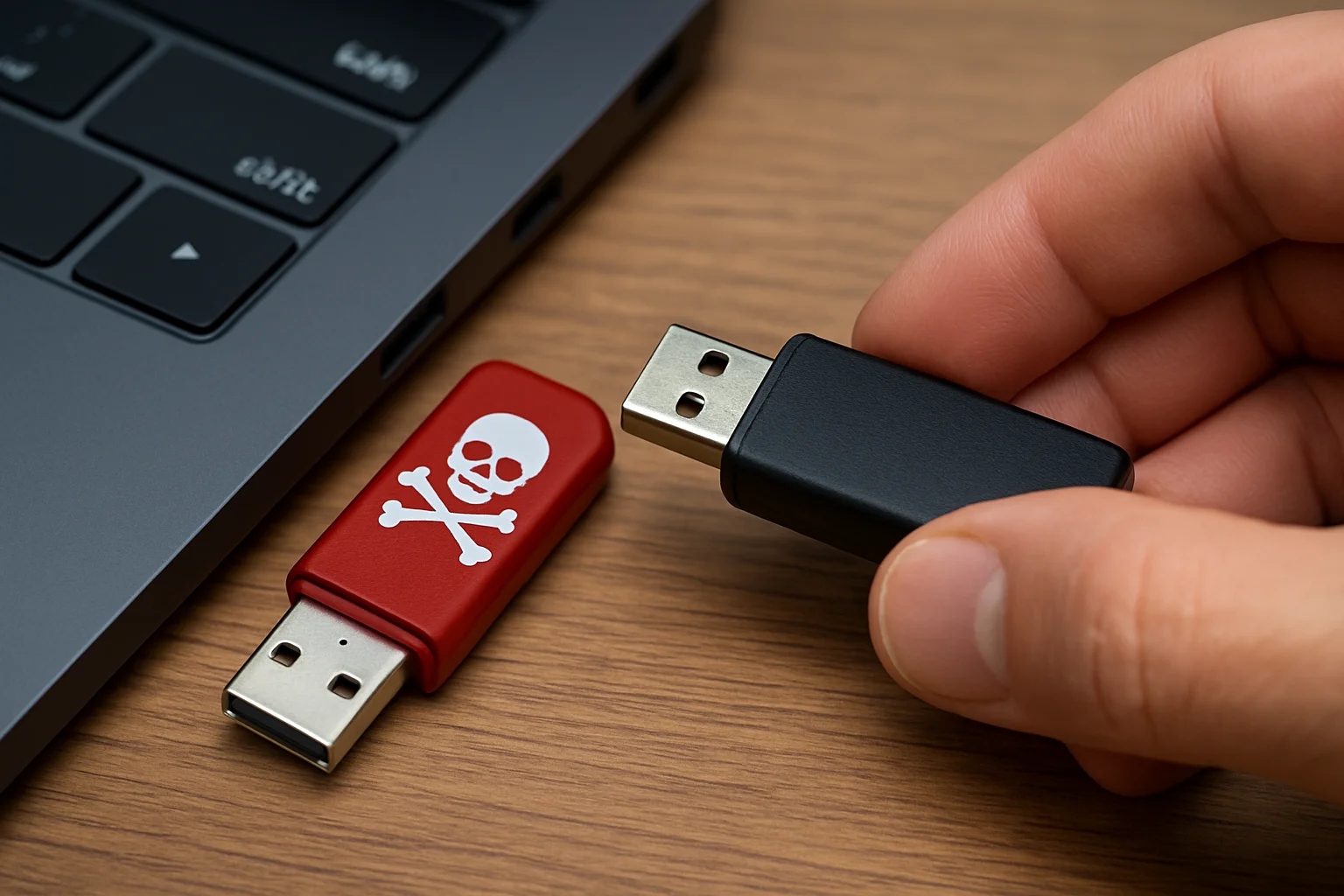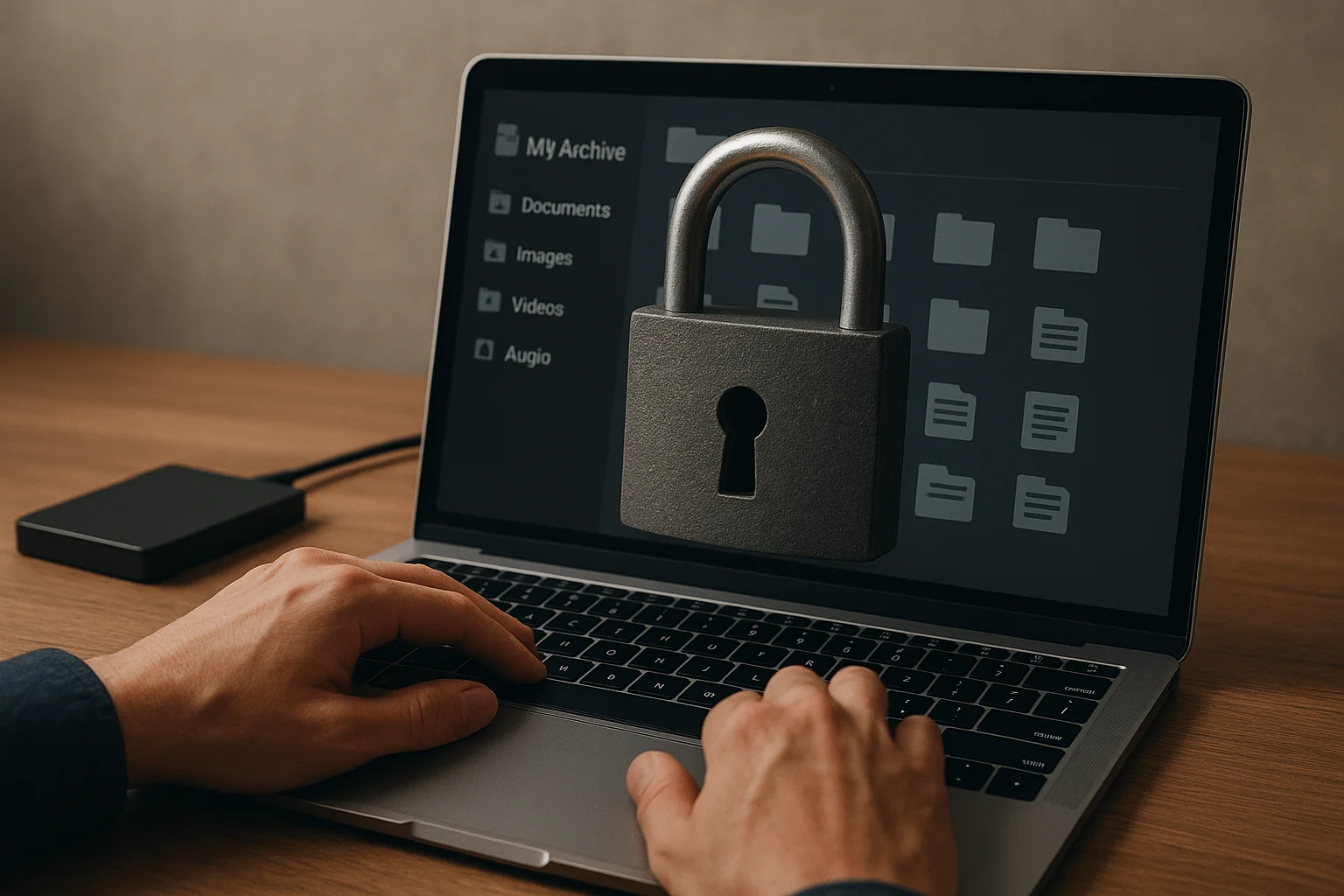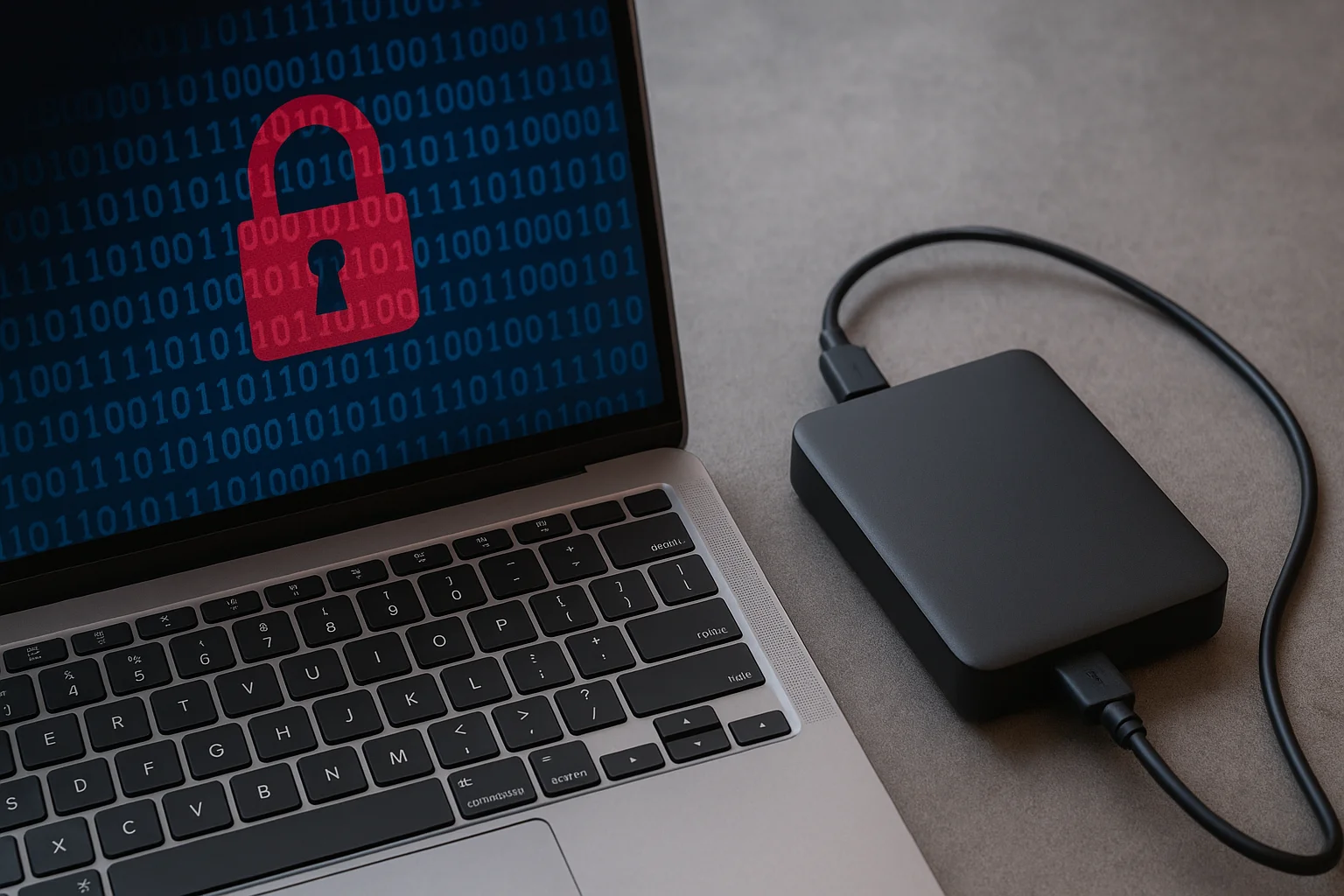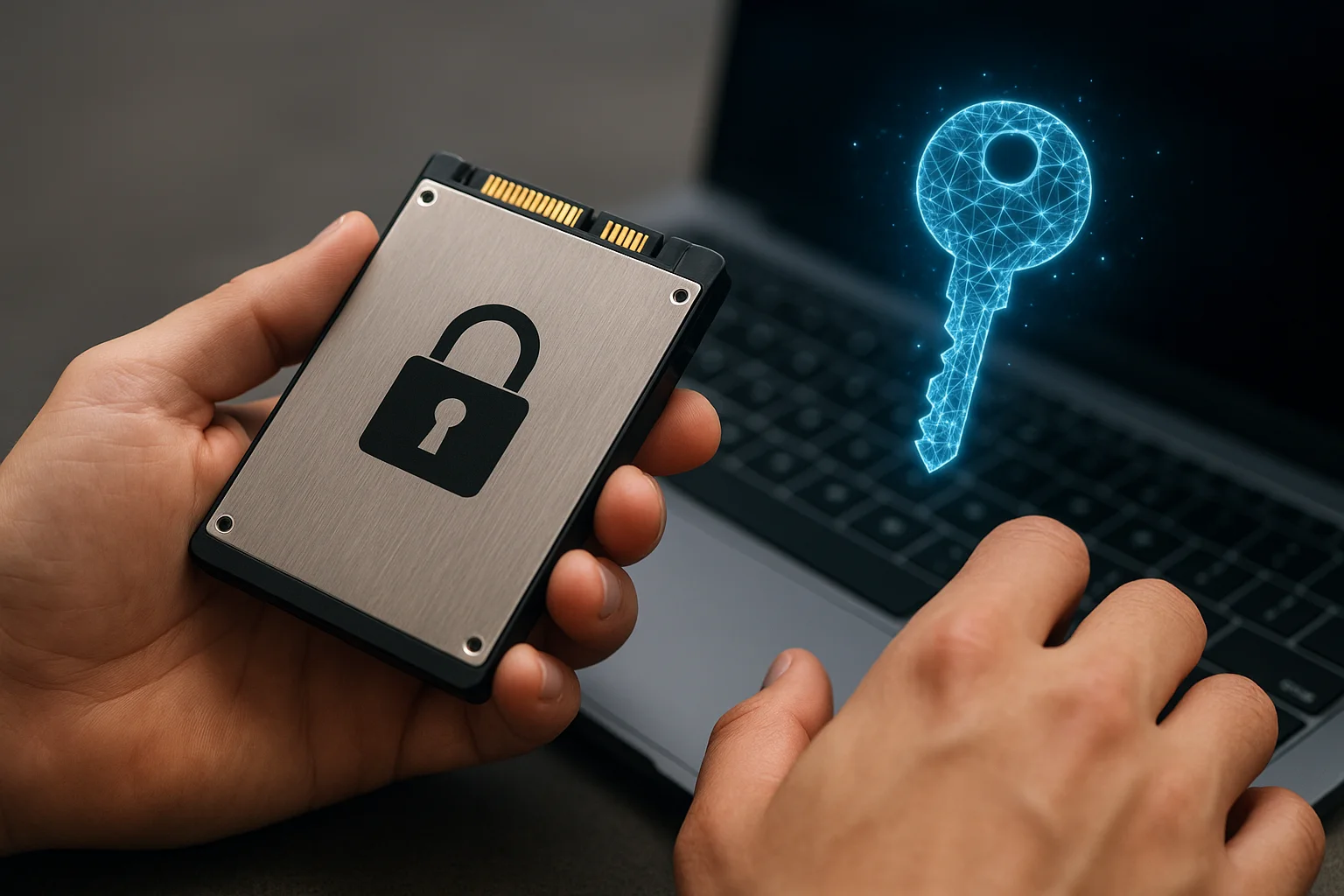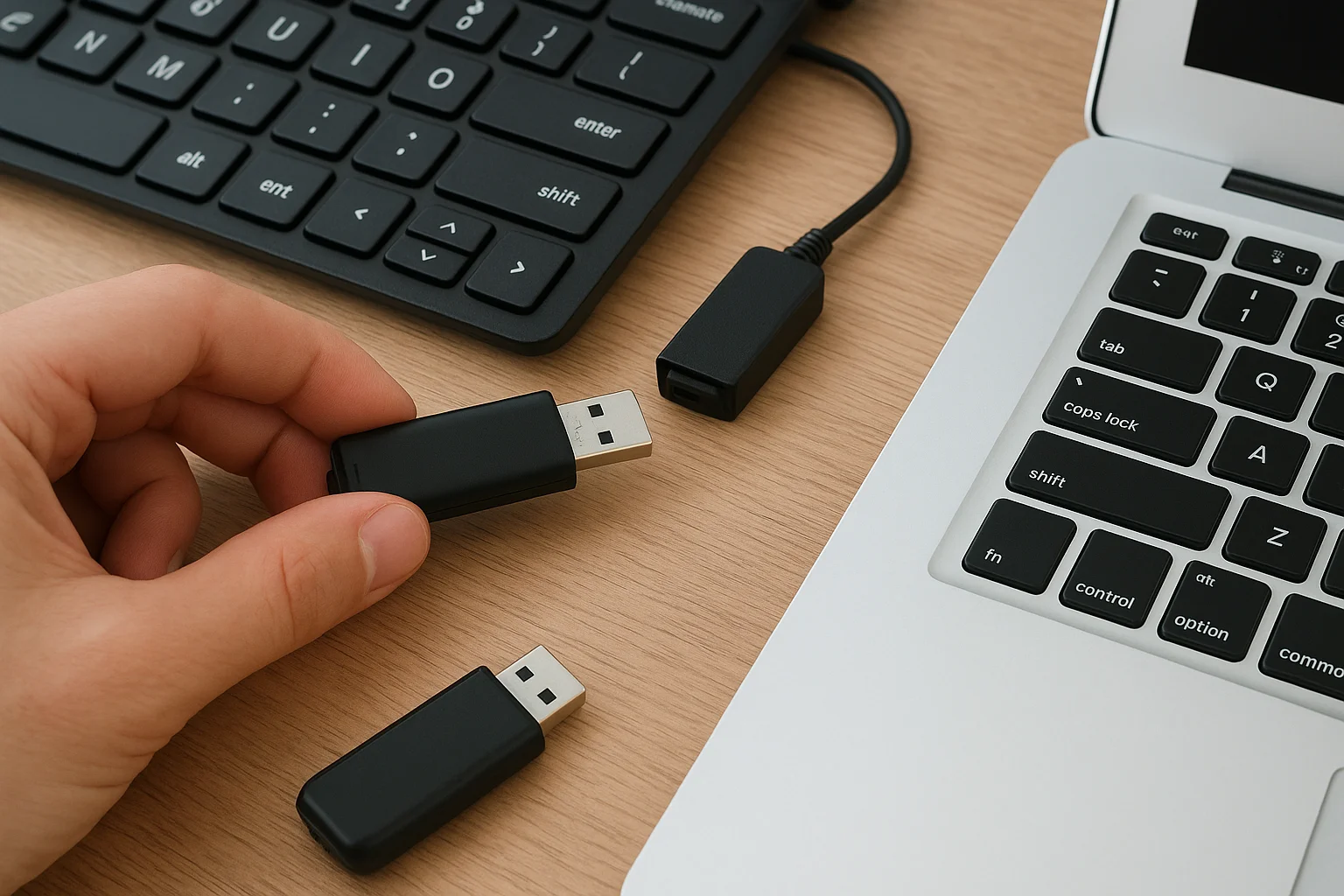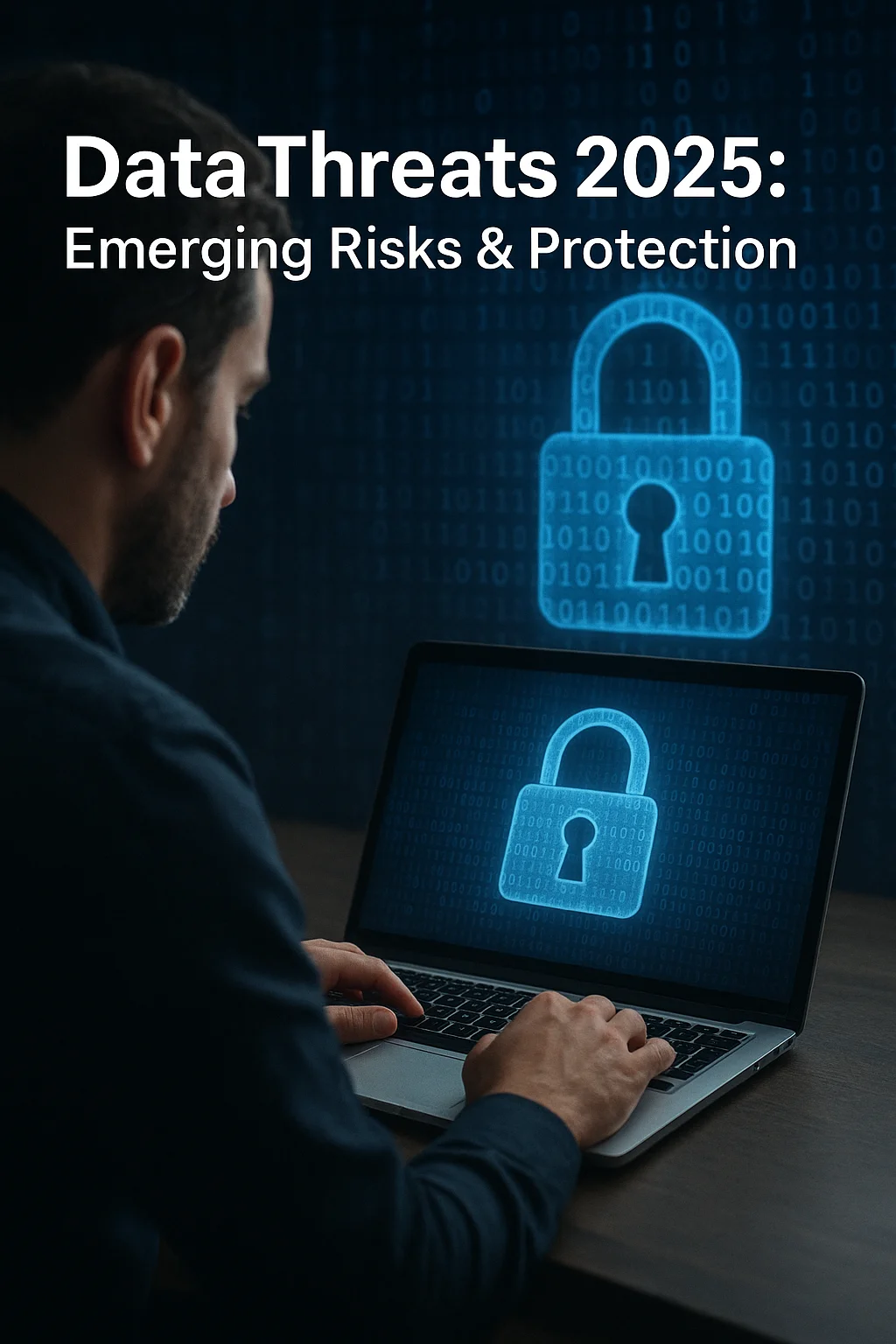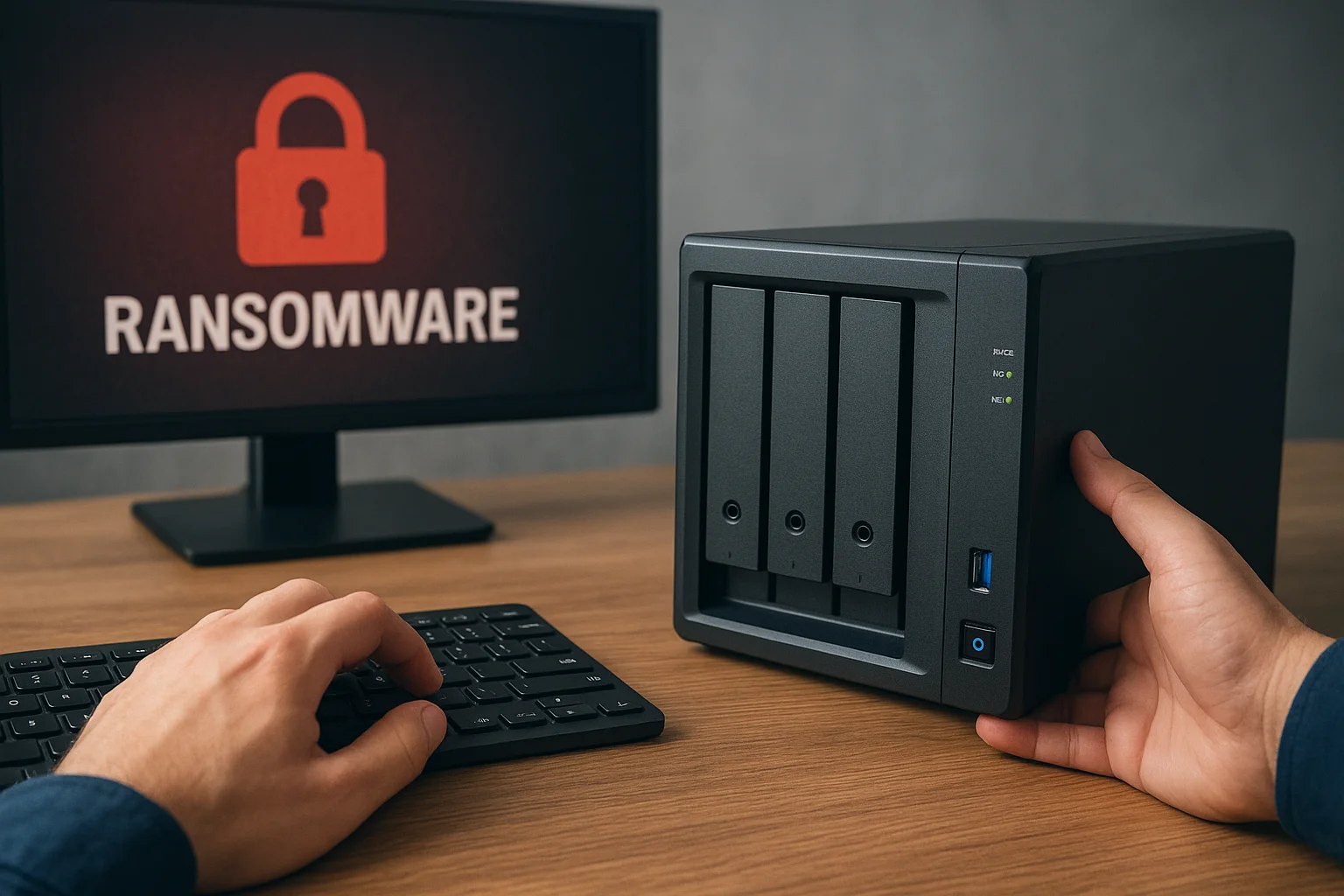How Malicious USB Drives Work
Malicious USB drives exploit both technical vulnerabilities and human behavior to compromise systems. These drives can carry malware, such as viruses, ransomware, or spyware, which automatically execute when connected to a computer. Some advanced malicious USBs use firmware-level attacks that can bypass traditional antivirus detection.
One common method is the BadUSB attack, where the USB’s firmware is reprogrammed to act as a keyboard or network device. This allows the attacker to inject commands, download malicious software, or redirect network traffic without any user interaction.
Another technique involves hidden payloads stored in seemingly harmless files. When a user opens these files, malware can exploit vulnerabilities in the operating system or installed applications, giving attackers control or access to sensitive data.
Some malicious USBs are designed for data exfiltration. They can silently copy files or credentials from the connected device and store them on the USB for later retrieval, making them extremely dangerous in corporate or public environments.
Other drives use social engineering tactics. For example, they may be labeled with enticing names like "Confidential" or left in public areas, encouraging someone to plug them into a device out of curiosity, inadvertently installing malware.
In addition to software-based attacks, certain malicious USBs can exploit hardware vulnerabilities, such as delivering electrical surges or manipulating power delivery to damage components, although these attacks are less common but highly destructive.
Signs of a Suspicious USB Drive
Recognizing a suspicious USB drive early can prevent serious security breaches. One of the first indicators is unexpected physical characteristics. This includes drives that are unbranded, unusually cheap, have mismatched logos, or appear tampered with. A drive that feels heavier or lighter than expected can also be a red flag.
Another warning sign is unusual behavior when connected. If a USB triggers multiple pop-ups, prompts for administrative access, or automatically executes unknown programs, it should be considered dangerous. Some malicious drives may also slow down the system or cause repeated crashes upon insertion.
Pay attention to file anomalies on the drive. Files with double extensions like "document.pdf.exe", strange icons, or hidden system files may indicate an attempt to disguise malware. Drives that contain unexpected scripts, executables, or encrypted folders without explanation should be treated with extreme caution.
Suspicious USBs can also be identified by their connection patterns. Drives that constantly attempt to connect to the internet, create new network connections, or emulate input devices without user action can indicate firmware-level manipulation or automated attacks.
Finally, consider the source and context. USB drives left in public areas, received from unknown individuals, or accompanied by notes urging immediate use are classic social engineering tactics. Even if a drive appears clean, plugging it into a secure environment first for testing is crucial.
Safe Practices When Handling USB Drives
Handling USB drives safely requires a combination of technical precautions and disciplined habits. First and foremost, always avoid connecting unknown or untrusted USB drives to your computer or network. Even a seemingly harmless drive found in a public space can carry hidden threats.
Before opening any files, make it a standard practice to scan the USB with reliable antivirus or anti-malware software. Modern security tools can detect suspicious scripts, executables, or unusual file structures before they can cause damage.
Consider using read-only or write-protected modes whenever possible. Many operating systems and specialized hardware allow drives to be accessed without the ability to write or execute files, reducing the risk of accidental malware installation.
Another effective practice is to use sandboxed environments or virtual machines for testing unknown USB drives. This ensures that any malicious code remains isolated from your main system, preventing unauthorized access to sensitive files or network resources.
Keep your system and software updated with the latest security patches. Vulnerabilities in operating systems or applications can be exploited by malicious USBs, so regular updates are a critical preventive measure.
Finally, educate yourself and others about proper USB handling. Simple habits like labeling personal drives, avoiding random sharing, and not following suspicious prompts can greatly reduce the risk of infection. A culture of awareness is one of the most effective defenses against USB-borne threats.
Tools to Detect Malicious USB Devices
Detecting malicious USB devices often requires specialized tools that go beyond standard antivirus scans. One category of tools focuses on USB scanning software, which can inspect the contents of a drive for hidden scripts, unusual file structures, or suspicious executable files. These tools often include heuristic analysis to identify potential threats even if the malware is previously unknown.
Another important category is device monitoring tools. These programs monitor how connected USB devices interact with the system, including unexpected input emulation, unauthorized network requests, or attempts to access sensitive directories. By analyzing device behavior in real time, they can flag drives that behave abnormally.
Endpoint security solutions also play a key role in detection. Modern endpoint protection platforms can enforce USB access policies, automatically scan new drives, and log any attempts to execute unauthorized scripts. They provide centralized control for organizations, ensuring that all USB connections are inspected before they can affect critical systems.
For more advanced users, tools that check firmware integrity are available. These utilities analyze the firmware of USB drives to detect signs of reprogramming or hidden functionalities that could be exploited for attacks such as BadUSB. Such checks are especially valuable in high-security environments.
Finally, using a combination of these tools with virtual environments or isolated test machines can significantly reduce risk. Unknown drives can be examined safely, and any malicious behavior can be contained before it has a chance to compromise real systems.
Preventive Measures for Organizations
Organizations face unique challenges when it comes to USB security, as multiple employees and devices increase the risk of malicious drives entering the network. A key strategy is to implement USB access policies, which define who can use USB ports, which types of devices are allowed, and under what circumstances external drives may be connected. Restricting access to only trusted personnel significantly reduces exposure.
Another critical approach is network segmentation and endpoint controls. By isolating critical systems and sensitive data from general workstations, even if a malicious USB is connected, the potential impact is limited. Endpoint controls can include automatic scanning, device whitelisting, and blocking unauthorized USB devices entirely.
Employee training and awareness are equally important. Staff should be educated on the risks of connecting unknown drives, the dangers of social engineering, and the proper procedures for reporting suspicious devices. Regular workshops and simulated phishing campaigns can reinforce these practices and create a culture of vigilance.
Organizations can also deploy centralized monitoring tools that log all USB activity, including connections, file transfers, and device metadata. These logs enable IT teams to detect anomalies, trace incidents, and respond quickly to potential threats. Combining monitoring with automated alerts ensures faster containment of malicious activity.
Finally, maintaining strict compliance with security standards and regularly auditing USB policies ensures that protective measures remain effective. Routine assessments, combined with updates to firmware and security software, help organizations stay ahead of evolving USB-borne threats.
